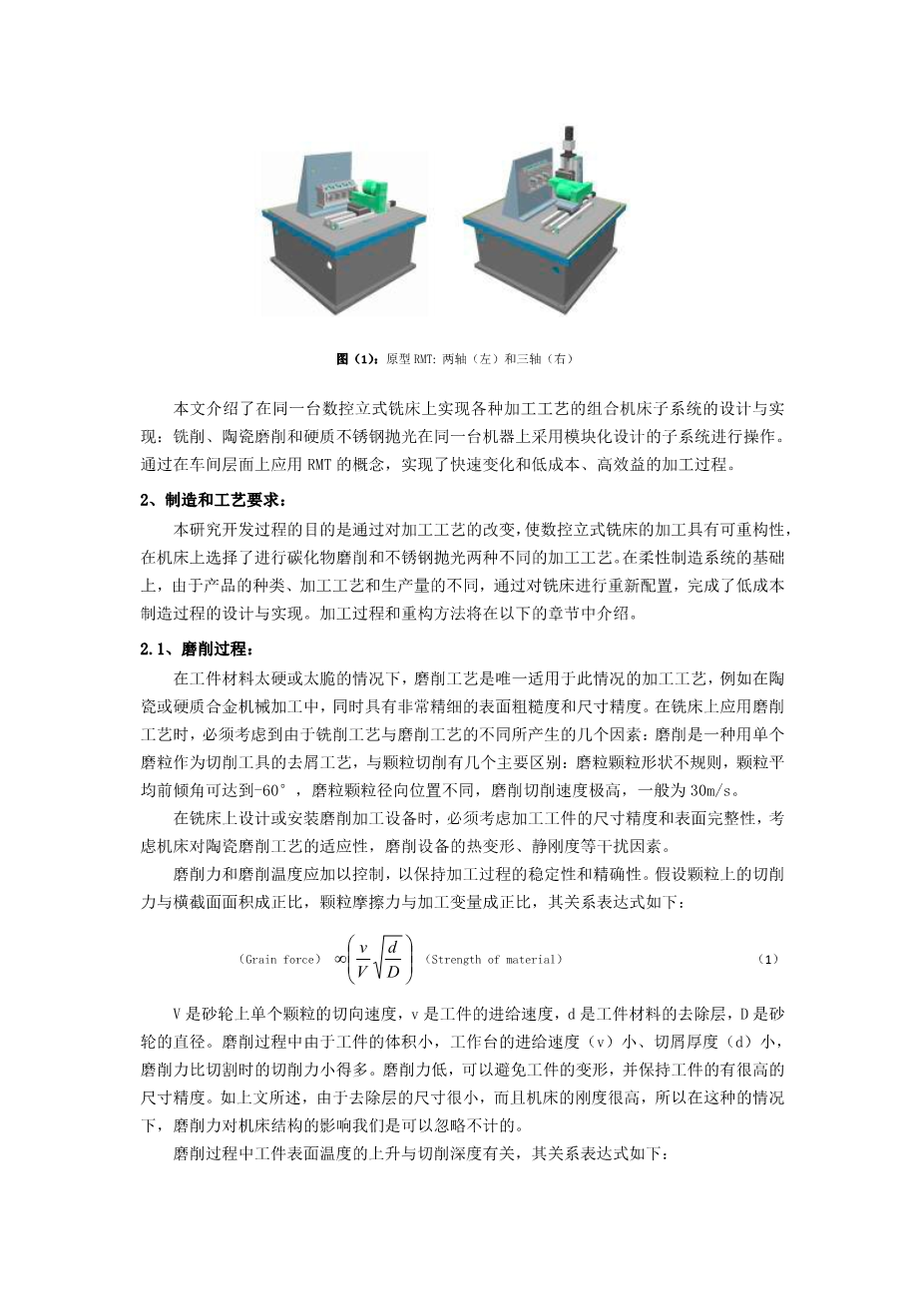Available online at www.sciencedirect.com
ScienceDirect
Procedia Manufacturing 21 (2018) 221–227
www.elsevier.com/locate/procedia
15th Global Conference on Sustainable Manufacturing
Reconfigurable machine tool:
CNC machine for milling, grinding and polishing
Yair Shneor*
Center for Advanced Manufacturing Technology, Rotem Ind. Ltd. D.N. Arava, Israel 86800
Abstract
Reconfigurable machine tool means that by the use of mechanical, control, hydraulic/pneumatic, and electrical modules, a rapid adaptability can be achieved. The main goal of a reconfigurable machine tool is to handle various changes in the product or parts to be machined. By the development of machine modules which can be quickly assembled and disassembled, one can enhance the efficiency of the machine tool. Designing different machining processes, using the same machine tool, can reduce the total energy consumption during the manufacturing process, the need for larger floor space in the plant and the cost per part. In this paper, the design and implementation of modular machine subsystems that enables various machining processes on the same CNC vertical milling machine, is reviewed. Milling, ceramic grinding and stainless steel polishing are carried out on the same machine, using modular designed subsystems.
copy; 2018 The Authors. Published by Elsevier B.V.
Peer-review under responsibility of the scientific committee of the 15th Global Conference on Sustainable Manufacturing (GCSM).
Keywords: Reconfigurable, Machine tools.
Introduction
Manufacturing companies face frequent and unpredictable market changes. These changes include high- frequency introduction of new products, new product demand and mix, new parts for existing products, new government regulations, and new process technology. To stay competitive, manufacturing companies must possess manufacturing systems that are fully and rapidly responsive to all these variables [1].
* Corresponding author. Tel.: 972-50-6231985; fax: 972-8-6573365.
E-mail address: yairshneor@gmail.com
2351-9789 copy; 2018 The Authors. Published by Elsevier B.V.
Peer-review under responsibility of the scientific committee of the 15th Global Conference on Sustainable Manufacturing (GCSM). 10.1016/j.promfg.2018.02.114
A responsive system incorporates a production capacity that is adjustable to fluctuations in product demand, is adaptable to new product functions, and is designed to be upgradable with new process technology to accommodate evolving product specifications and government regulations. Current systems, even so-called flexible manufacturing systems, do not have these characteristics [1].
Reconfigurable manufacturing system (RMS) is one that is designed at the outset for rapid change in its structure, as well as in its hardware and software components, in order to quickly adjust its production capacity and functionality, within a part family, in response to market changes [2]. Machine tools a part of manufacturing systems foundations and it can be dedicated, flexible and reconfigurable. Reconfigurable machine tools (RMT) should produce processes as turning, milling, drilling, grinding or combinations of these processes.
RMTs primary aim is to handle various changes in the product or parts that are about to be manufactured. The possibilities of product variations are: workpiece size, part 3D geometry and complexity, production volume and production rate, required processes, accuracy requirements in terms of geometrical accuracy surface quality, etc., and material property [2].
Modularity is a key characteristic of RMT. Several machine tools manufacturers (Mazak, Heller) have dealt with machine modularity by adding and deleting standard units as required. Machine tools can be designed from the first step as a reconfigurable system or by adding special modular subsystems, one can reconfigure an existing machine tools.
The level of reconfigurability depends on the dominant manufacturing requirements. For example, changing the workpiece size can require altering machine elements such as column, table, spindle unit, etc. of different sizes as shown in Fig. 1[3]. On the one hand, this kind of reconfigurability can achieved only if the manufacturer who would be able to handle such a change designs the machine. On the other hand, reconfigurability for changes in machining processes can achieved by changing the cutting tool, and by adding, for instance, grinding unit or polishing unit on the vertical milling machine. In Fig 2. a polishing module that can be mount on the same milling machine as the grinding unit is presented. In this case, by reconfiguring the machine, three rotational D.O.F are added to the four originally existing D.O.F vertical milling machine axes. The end user on the shop floor level can do the reconfiguration mentioned.
In this paper, the design and implementation of modular machine subsystems that enable various machining processes on the same CNC vertical milling machine is reviewed. Milling, ceramic grinding and stainless steel polishing are carried out on the same machine using modular designed subsystems. By applying the concept of RMT at the shop floor level, rapid change and cost-effective machining processes are achieved.
Fig. 1. Prototype RMT: two-axis(left) and three-axis (right) [2].
Manufacturing and process requirements
The objectives of this research and development process is to enable the reconfigurability of CNC vertical milling machine via changes performed on machining processes. Two different types of machining processes were selected to be impleme
剩余内容已隐藏,支付完成后下载完整资料


英语译文共 7 页,剩余内容已隐藏,支付完成后下载完整资料
资料编号:[609913],资料为PDF文档或Word文档,PDF文档可免费转换为Word


